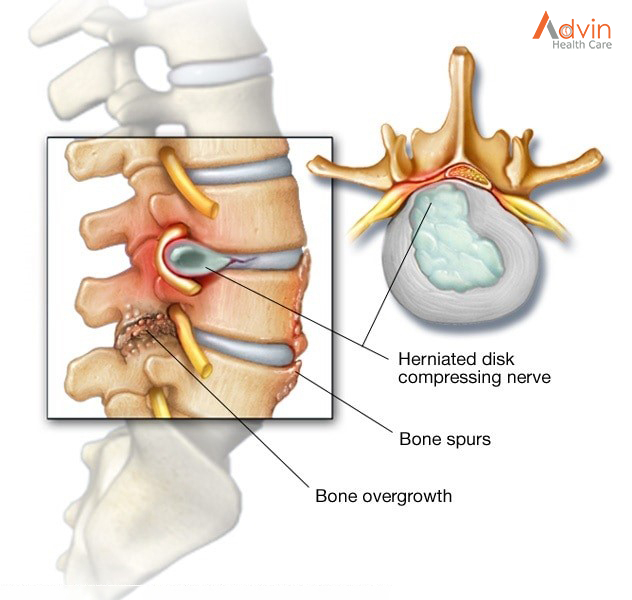Most pain in the lower back can be treated without surgery. In fact, surgery often does not relieve the pain; research suggests that 20 to 40 percent of back surgeries are not successful. This lack of success is so common that there is a medical term for it: failed back surgery syndrome.
Nonetheless, there are times when back surgery is a viable or necessary option to treat serious musculoskeletal injuries or nerve compression. A pain management specialist can help you decide whether surgery is an appropriate choice after making sure you have exhausted all other options.
Do you need back surgery?

Back surgery might be an option if other treatments haven’t worked, and your pain is disabling.
Many people with back pain also have pain that goes down a leg. These symptoms are often caused by pinched nerves in the spine. Nerves may become pinched for a variety of reasons, including:
- Disk problems. Disks are the rubbery cushions that separate the bones of your spine. A bulging or herniated disk can sometimes get too close to a spinal nerve. This can cause pain and affect how the nerve works.
- Overgrowth of bone. Osteoarthritis can result in bone growths, often called spurs, on your spine. This excess bone can reduce the amount of space available for nerves to pass through openings in your spine.
Back surgery relieves this leg pain better than it does back pain. Many people who have back surgery continue to have pain in their backs.
It can be very difficult to pinpoint the exact cause of back pain, even if imaging tests show disk problems or bone spurs. Imaging tests taken for other reasons often reveal bulging or herniated disks that cause no symptoms and need no treatment.
When should I consider back surgery?
According to the National Institute of Arthritis and Musculoskeletal and Skin Diseases (NIAMS), part of the National Institutes of Health (NIH), the following conditions may be candidates for surgical treatment:
- Herniated or ruptured disks, in which one or more of the disks that cushion the bones of the spine are damaged
- Spinal stenosis, a narrowing of the spinal column that puts pressure on the spinal cord and nerves
- Spondylolisthesis, in which one or more bones in the spine slip out of place
- Vertebral fractures caused by injury to the bones in the spine or by osteoporosis
- Degenerative disk disease, or damage to spinal disks as a person gets older
In rare cases, back pain is caused by a tumor, an infection, or a nerve root problem called cauda equina syndrome. In these cases, NIAMS advises surgery right away to ease the pain and prevent more problems.
Types of Back Surgery

- Discectomy. This procedure is used to remove a disk when it has herniated and presses on a nerve root or the spinal cord. Laminectomy and discectomy are frequently performed together.
- Foraminotomy. In this procedure, the surgeon enlarges the bony hole where a nerve root exits the spinal canal to prevent bulging disks or joints thickened with age from pressing on the nerve.
- Artificial disk replacement. This is considered an alternative to spinal fusion for the treatment of people with severely damaged disks. The procedure involves removal of the disk and its replacement by a synthetic disk that helps restore height and movement between the vertebrae.
- Vertebroplasty and kyphoplasty. These procedures are used to repair compression fractures of the vertebrae caused by osteoporosis. Both procedures include the injection of a glue-like bone cement that hardens and strengthens the bone.
- Nucleoplasty, also called plasma disk decompression. This laser surgery uses radiofrequency energy to treat people with low back pain associated with a mildly herniated disk. The surgeon inserts a needle into the disk. A plasma laser device is then inserted into the needle and the tip is heated, creating a field that vaporizes the tissue in the disk, reducing its size and relieving pressure on the nerves.
- Spinal fusion. The surgeon removes the spinal disk between two or more vertebrae, then fuses the adjacent vertebrae using bone grafts or metal devices secured by screws. Spinal fusion may result in some loss of flexibility in the spine and requires a long recovery period to allow the bone grafts to grow and fuse the vertebrae together.
- Spinal laminectomy /spinal decompression. This is performed when spinal stenosis causes a narrowing of the spinal canal that results in pain, numbness, or weakness. The surgeon removes the bony walls of the vertebrae and any bone spurs, aiming to open up the spinal column to remove pressure on the nerves.
What Are the Benefits?
Often, the result is more than just a drop in pain. You may find:
- You can move around better.
- You’re more physically fit.
- Your mood improves.
- You don’t need to take as much pain medicine.
- You can go back to work.
- You’re more productive at work.
Are There Risks?
Most people who get back surgery have minimal, if any, complications.
That said, any operation has some degree of risk, including:
- Reaction to anesthesia or other drugs
- Bleeding
- Infection
- Blood clots, for instance in your legs or lungs
- Heart attack
- Stroke
- Herniated disk
- Nerve damage, which can lead to weakness, paralysis, pain, sexual dysfunction, or loss of bowel or bladder control


